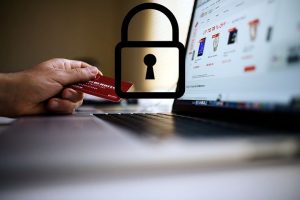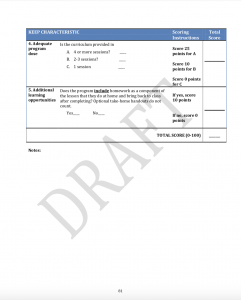Topic:
Student privacy and online safety fall hand in hand when deciding how and when to use technology in the classroom. The increased reliance on technology in the classroom has directly contributed to the importance of having safety precautions when navigating online networks. The issue with student privacy and online safety is that the topic encompasses a large crowd of underaged students, of whom need adult supervision and protection from the threats of online scammers and trackers. Since the emergence of using technology for education, the concerns for keeping students safe while building an online identity remains a point of importance for educators and parents alike.


I initially thought student privacy was only important because of concerns regarding information being shared with other student and parents, and I did not consider that businesses or other sources would be interested in collecting data on students using the internet. I did not have much knowledge on the topic other than hearing about FERPA because of previous teachers using the terminology in class or in emails. Additionally, my preceding knowledge about online safety was limited to knowing about firewall protections and internet blocks put in place by my previous school system.
Assumptions:
Before diving deeper into the subject during class, I had little knowledge about the extent policymakers go to effectively protect students online. My previous understanding of the topic was minute in comparison to the complexity and wide range of applicability that student privacy and online safety encompass. I only understood that when I used an online account for a school project, the account was usually already linked to my school email address and was already created for me. Since teachers and other faculty were allowing and encouraging me to use these online sites, I never thought about what consequences I might have in my digital footprint.
Some recognitions I have made regarding my initial assumptions include realizing that many online sites collect data off of students who use the site and then give the information to marketers or other businesses to track clicking habits. I have a stronger understanding of the pros and cons of using technology for educating, and although the internet is a world of worry, in my opinion, the benefits far outweigh the drawbacks. Even when considering the difficulties of protecting student identities and baring in mind the possibility of being observed online, it is still important to teach students how to navigate the world wide web and how to interact with an online community as a cooperative digital citizen.
New Ideas:
Through many online sources, most that were mentioned in class, I learned the meaning of FERPA – The Family Education Rights and Privacy Acts – which acts as privacy protection for student and parents in regards to academic records. The U.S. Department of Education provides information on how FERPA applies and more importantly highlights why it is needed.
In addition to learning about a law that protects student’s privacy, I also learned about what makes up our digital footprint, and how every search engine we use and website we click on is linked to us. From creating an online profile with a password to making purchases with a credit card, online trackers can access more information about an individual online than ever meeting in person. This frightening realization impacts the way that teachers feel about integrating internet usage into the classroom and furthermore strengthens the need for protection of student’s digital identities. As explained by Common Sense, it is important to reclaim our rights to privacy, and our role in the process is to reduce the value of data that is collected. This can be achieved by employing privacy protections such as virtual private networks, by deleting old emails and files, and by turning off Bluetooth, wireless, and location services when they are not needed (For more information on how to gain control over your privacy, go to https://www.commonsense.org/education/privacy/blog/five-days-of-privacy-2016-summary-and-simple-steps).
After learning about the possible benefits and repercussions of using online sources for education, I was given the opportunity to participate in a debate on whether teachers should encourage the use of digital tools in the classroom and beyond. I argued for online usage in the classroom because I learned that the threats against student privacy are going to exist regardless of whether or not students are taught how to be self-aware online. Because student privacy laws are continuously being pushed through governmental offices, it is obvious that strides are being made to resolve issues currently present online. By introducing students to acceptable online behaviors and being upfront about the potential harms of using the internet, students and parents can equally benefit beyond the classroom.


A Course of Action:
Larry Magid and Anne Collier, the authors of, “Online Safety 3.0: Empowering and Protecting Youth,” compare the internet to a playground. The metaphor emphasizes that protections in the digital world need to be safe but also interesting and engaging. By accentuating that not one-size-fits-all in keeping children safe online, the authors claim that a new approach for informing youth and adults about internet safety needs to be empowering and not restrictive. As a future educator, I plan to return to this analogy when deciding what online tools to incorporate in my student’s education plans. I hope to utilize the online network of educators and learning outlets without jeopardizing the privacy and safety of my future students.
From the module on student privacy issues and the safety of the digital realm, I have gained knowledge on how to determine what sources are suitable for students to access through KEEP –


https://www.icactaskforce.org/Documents/InternetSafety/KEEP_Checklist.pdf
– a resource that provides a list of points that a credible program should include. Additionally, I have learned how impactful an individual’s digital footprint can be on what site trackers know about a single person, and because of this, I am more aware and cautious of my interactions on the internet. In the future, I hope to make use of the various resources that can be used to control both my students and my own privacy, and limit the number of accounts my students need to make in order to succeed inside and out of the classroom.
Learned:
As I was supplied with resources and information on the topic, I noticed the urgency for change that I had previously no knowledge of. As a student, I believed that my internet usage was private and for my eyes only, but seeing the intentions of site trackers and online data collectors, I now have a solid grasp on the transparency of being part of the online community. Learning about being a protective educator has provided me with a new perspective that influences my perception of why students need protection from online trackers, hackers, and other cyber threats.
